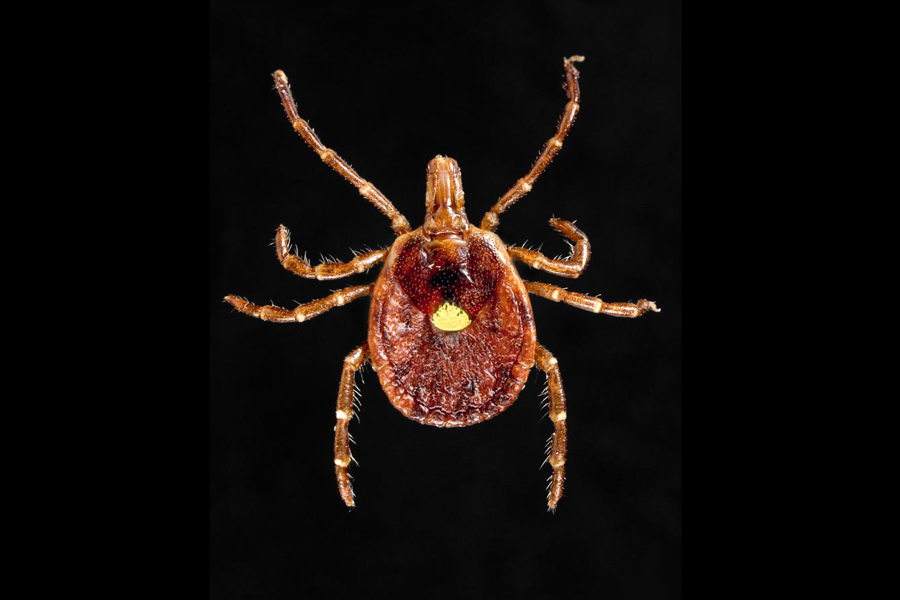This Is How a Woman Died from a Tick-Borne Disease Without a Tick Bite

A woman in Japan died last year from a tick-borne disease — but she was never bitten by a tick.
Instead, investigators believe the woman became infected with a disease called severe fever with thrombocytopenia syndrome through a bite from a stray cat, according to The Japan Times. (Essentially, the cat was bitten by an infected tick, got infected and then passed that virus on to the woman.)
But what is severe fever with thrombocytopenia syndrome, and is it odd for a tick-borne disease to cut ticks out of the equation?
An Asian virus
Severe fever with thrombocytopenia syndrome is caused by a virus of the same name: severe fever with thrombocytopenia syndrome virus, or SFTSV, according to the Centers for Disease Control and Prevention. The virus is spread primarily through ticks.
If you haven't heard of SFTSV, it may be because no cases of the disease have been reported in the United States; rather, infections have been reported only in Asia. [10 Important Ways to Avoid Tick Bites]
SFTSV is considered an emerging infectious disease, and researchers are still learning about it, said Dr. Amesh Adalja, an infectious-disease specialist and a senior associate at the Johns Hopkins Center for Health Security, who was not involved in the Japanese woman's case.
Suspected cases of the infection started to emerge in the mid-2000s, and scientists first isolated the virus in a lab in 2010, Adalja told Live Science.
Sign up for the Live Science daily newsletter now
Get the world’s most fascinating discoveries delivered straight to your inbox.
An increase in diagnoses of SFTSV doesn't necessarily mean that the virus is becoming more common, Adalja noted. Rather, doctors may be more aware of the disease and know to look for it, leading to the increase in documented cases.
Fevers and blood problems
The tick-borne virus causes general flu-like symptoms, including fever, headache, and aches and pains, Adalja said. But these common symptoms can be caused by a number of diseases. A cluster of cases in China in 2007, for example, was thought at one point to be caused by a form of typhus spread by mites or a bacterial infection spread by ticks, he said.
As the disease progresses, however, it can cause changes in a person's blood, Adalja said. "Thrombocytopenia," for example, means that a person doesn't have enough platelets in their blood. Platelets help blood clot, so having fewer platelets can lead to bleeding problems. The virus can also lower the levels of white blood cells, which are cells that help the body fight infections, he said. [27 Devastating Infectious Diseases]
Eventually, SFTSV can lead to multiple-organ failure, Adalja said, meaning that various organs in the body shut down. Studies suggest that up to 30 percent of people who get the virus die, he noted.
Currently, there are no specific treatments for SFTSV, Adalja said. Instead, doctors treat the patients through supportive care.
Trouble in the heartland?
Because there haven't been any documented cases of SFTSV in the U.S., the disease isn't something a doctor would normally look for, Adalja said. However, he added that the virus is similar to another infection that's emerged stateside in recent years: the Heartland virus.
The Heartland virus is also a tick-borne disease, and studies have found that the two viruses are genetically related, Adalja said. In fact, animals infected with the Heartland virus may make antibodies for SFTSV, he said. A 2013 study, for example, found SFTSV antibodies in animals including sheep, goats and deer in Minnesota; it's possible that the animals made the antibodies in response to the Heartland virus.
Where's the tick?
Mammal-to-mammal transmissions of SFTSV have been reported before, Adalja said. In 2012, researchers reported human-to-human transmission of SFTSV in China, he said. And a review of the virus published in the journal The Lancet in 2014 suggests that human-to-human transmission of SFTSV is possible.
"It's not surprising" that the virus can be spread without a tick, Adalja said. "It's not the main mechanism [of spreading], but it can happen." If a virus is in an animal's blood or body fluid and a person comes into contact with that blood or body fluid, the virus can spread, he said.
Originally published on Live Science.

Flu: Facts about seasonal influenza and bird flu
What is hantavirus? The rare but deadly respiratory illness spread by rodents











